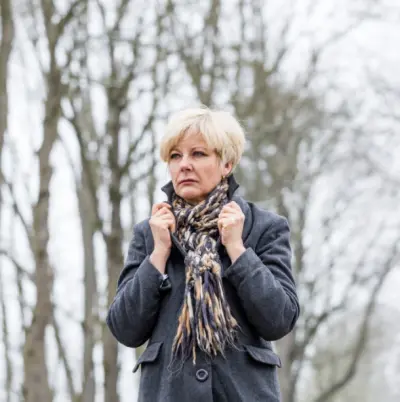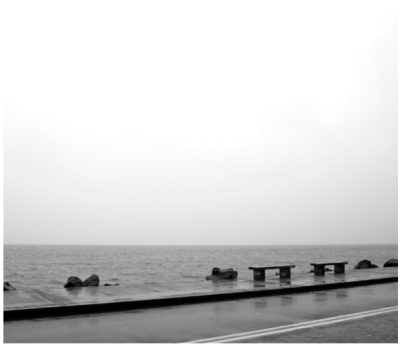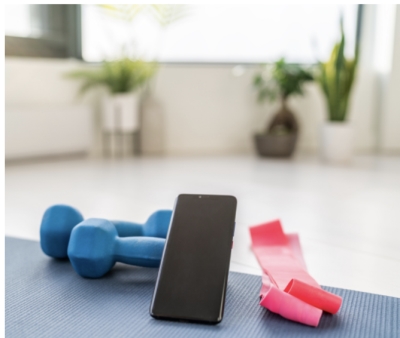

No matter where you live, the fall and winter months bring less sunlight, a more-hectic schedule, and seasonal depression. According to the American Psychiatric Association, seasonal depression, also called seasonal affective disorder (SAD), affects five percent of U.S. adults.
The most challenging months for people suffering from SAD tend to be January and February, after the holidays. And seasonal depression doesn’t discriminate based on where you live. People living farther from the equator, where there tends to be even less sunlight during the winter months, are often more affected.
But whether you live in sunny San Diego or rain-soaked Washington, SAD can make you feel miserable in the year’s later months.
The good news is, SAD is treatable. You just have to know how to deal with seasonal depression and take the steps to reduce your symptoms.

Symptoms of Seasonal Depression
Seasonal affective disorder can be sneaky because it mimics the symptoms of clinical depression. The difference between the two is the timing. Most of the time, seasonal depression rears its unpleasant head in the fall and winter months.
Clinical depression can occur during these months, too, of course. But if you notice your symptoms coinciding with the change of seasons, it’s likely SAD.
*We would like to note that seasonal affective disorder can actually happen in the summer months! It’s known as summertime sadness, or reverse SAD, and occurs in less than one-tenth of all SAD cases.
The most common symptoms of the seasonal affective disorder include:
- feeling sad or depressed, with a noticeable mood shift in the fall and winter months
- loss of energy and increased fatigue
- changes in sleeping patterns (typically sleeping more)
- feeling worthless, irritated, or hopeless
- difficulty concentrating
- loss of interest in things they used to enjoy
- changes in appetite, often craving carbohydrates
- diminished libido
- thoughts of death or suicide
As you can see, these symptoms sound a lot like clinical depression. That should clue you into the fact that this is more than just “winter blues.” Seasonal depression is a serious mental illness that should be treated by a mental health professional.
Causes of Seasonal Depression
Unfortunately, experts don’t exactly know what causes seasonal affective disorder. But some things could contribute to the development of SAD.
- Lower serotonin levels – Serotonin is your “happiness hormone.” This naturally-occurring brain chemical dramatically influences your mood. One of the primary sources of serotonin is sunlight. So if you aren’t getting enough sunlight, your body can’t produce enough serotonin. And less serotonin means lower levels of happiness. (Cue: SAD.)

- Higher melatonin levels – On the flip side, your body also produces melatonin, your “sleepiness hormone.” When the sun sets, your body automatically creates more, making you feel tired.
So when there’s less sunlight and less serotonin present, your body may produce an excessive amount of melatonin, which disrupts sleep patterns and can make you more susceptible to depression.
- Disrupted circadian rhythm – Your body is designed to feel more awake and happy during the day and more relaxed and sleepy when the sun goes down. This is your circadian rhythm, otherwise known as your biological clock.
A reduction in sunlight and serotonin levels may disrupt your biological clock and lead to SAD.
Related post: What to Do If Your Depression Is Getting Worse
What To Do For Seasonal Depression
When considering how to deal with seasonal depression, you should first consider your risk factors.
- History of depression
- Family history of SAD or other forms of depression
- Low levels of vitamin D
- Living far from the equator
If you have dealt with seasonal affective disorder in the past, or you have a history of depression, make sure you prepare. The optimal first step is to make sure you ready yourself for the changing seasons and the possibility of SAD.
Related post: Finding the Best Depression Treatment in San Diego
Here are some practical things you can do to combat the symptoms of seasonal depression:
1. Light therapy
One of the most common suggestions you’ll hear people say when considering how to deal with seasonal depression is light therapy. A big trigger for SAD symptoms is a lack of sunlight. So if you can’t get enough sunlight and serotonin, you have to make your own!

Light therapy uses lightboxes, or phototherapy boxes, to keep your circadian rhythm and hormones in balance when there is a lack of sunlight. The bulbs in light therapy boxes are brighter than typical light bulbs and are offered in varying wavelengths.
Experts recommend sitting in front of your lightbox for 10-30 minutes within one hour of waking up. This will help the chemicals in your brain normalize to typical levels, reducing the symptoms of SAD.
Light therapy isn’t suitable for everyone, especially if you have diabetes or retinal damage. It’s best to speak with your doctor before using one.
2. Stay Connected
One of the symptoms of seasonal affective disorder is a lack of enthusiasm for doing things you usually enjoy. And many times, you’ll just want to hide under your covers and sleep, not interacting with others.
But when considering what to do for seasonal depression, you need to do the opposite.
True, it can be challenging to motivate yourself to hang out with trusted friends or family. But it’s one of the best things you can do when dealing with SAD.
Perhaps create a standing social obligation that’ll get you out of the house and connected with people you care about. Social interaction, even if you are an introvert, social interaction can have a tremendously positive impact on your mental health.
Related post: What is Depression and What Are the Best Treatments?
3. Move your body
Exercise. It seems to be the answer to all of life’s health problems, right? Well, there’s a reason that’s the case. There’s tons of research linking the positive effects of exercise to decreased symptoms of depression.
It can be extremely challenging to consider moving your body, especially if it’s cold and dreary outside. But there are lots of exercises programs you can do inside, too. Try searching for free exercise videos on YouTube and get your body moving
Semi-strenuous exercise releases endorphins, aids in digestion, stimulates immunity and delivers physiological responses to prevent and relieve symptoms of depression.

4. Write it down
You’ve likely heard about the healing powers of journaling. When you write down your feelings, thoughts, and goals in a journal, you can physically express what you’re experiencing. Breathing life into your thoughts and feelings makes them more tangible and allows you to work with them from a different perspective.
Journaling can help you identify things that trigger your SAD symptoms. You can work with a therapist on exactly how to fight these triggers successfully.
Related post: What to Expect in a Depression Treatment Program
5. Get professional help
That leads us to perhaps the most important tip: get help from a mental health professional. Therapists, counselors, and psychiatrists know how to deal with seasonal depression. And they can help you too.
Seasonal affective disorder is a mental illness that should be diagnosed and treated by a mental health professional. A skilled therapist like ours here at BOLD Health in San Diego can teach you how to fight the symptoms of seasonal depression before, during, and after they occur.
Depending on your level of need, you may benefit from one-on-one and group therapy and might also benefit from medication management.
Our BOLD Health Team Can Help You Combat SAD
If you are in the San Diego area and are looking for what to do for seasonal depression, we’re here for you. Our comprehensive team of experts will work with you to identify your symptoms, triggers, and biggest struggles with seasonal depression.
Here at BOLD Health, we first treat you as the wonderfully-unique individual you are. We take into account your past experiences and biological and psychological underpinnings leading to your symptoms when we design your individualized treatment program.

Using only evidence-based therapy approaches, our clinical team can help you feel more like yourself in no time. Don’t wait. Take the BOLD step and get the help you need for seasonal depression today.
4 Comments



[…] Related post: 5 Ways You Can Combat Seasonal Depression […]
[…] 5 Ways You Can Combat Seasonal Depression […]
[…] Seasonal Affective Disorder (SAD) […]
[…] If you live in the San Diego area, you’re probably already familiar with this weather phenomenon. The technical reason for May Gray and June Gloom has to do with temperature differences between the ocean water and the air. This time of year, the temperatures differ so greatly that they create a dense marine layer that blankets the typically-sunny SoCal coast with low clouds and fog. The non-technical way to describe May Gray and June Gloom is really just a bunch of crummy, non-sunny days in a row. And you know what that means? It means an onset of depression for many—specifically, seasonal depression or seasonal affective disorder (SAD). […]